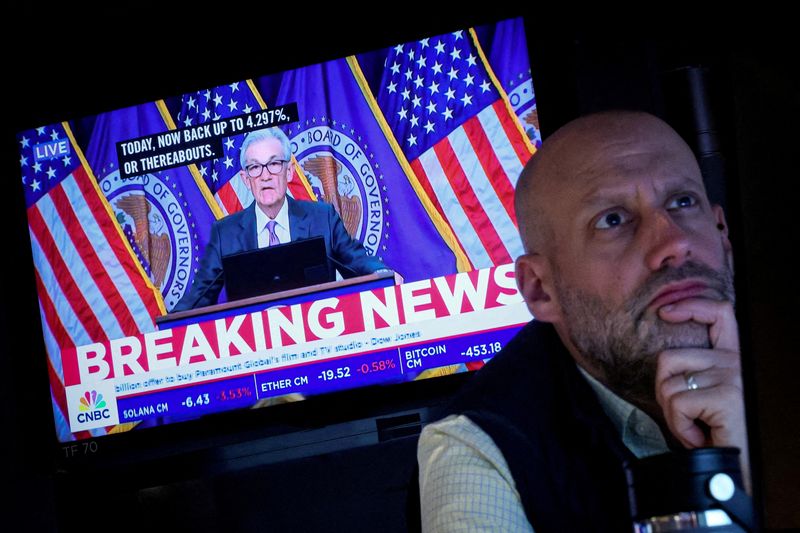By David Randall and Davide Barbuscia
NEW YORK (Reuters) - As the U.S. Federal Reserve begins its much-anticipated rate-easing cycle on Wednesday, interest-rate cuts in the months ahead may be shallower than the market expects.
Some major investors and analysts see a rate-cutting cycle that could leave rates at relatively high levels due to the ongoing strength of the economy and say that deep cuts would only make sense if there is a recession ahead.
“My sense is that what markets currently expect from the Fed regarding lower interest rates goes beyond what most Fed officials and economists are comfortable with,” said Mohamed El-Erian, the former head of bond-focused asset manager PIMCO, in an email to Reuters.
Expectations are split between a 50-basis-point and 25-basis-point cut on Wednesday, with bets skewed toward a larger cut as of Tuesday, setting up markets for a burst of volatility. In addition to announcing its rate decision, the Fed will update its forecasts on the future rate-cutting path.
In its latest projections in June, Fed officials estimated the long-run "neutral" rate needed to keep inflation in check at 2.8%.
Investors are pricing in about 240 bps of rate cuts by the end of next year, which would correspond to a rate of nearly 3%, from 5.25%-5.5% currently. Such a pace of rate cuts would imply a recession, according to Torsten Slok, chief economist at Apollo Global Management (NYSE:APO).
"Despite surveys showing that the consensus is expecting a soft landing, rates markets are pricing in a full-blown recession," Slok said in a note on Tuesday.
Two-year Treasury yields have fallen some 140 bps from their 2024 peak in April on expectations of lower rates. At 3.61% on Tuesday, they imply that interest rates will average that much over the next two years.
"The bond market has priced in a lot (of cuts) between now and next year, which is a very aggressive scenario," said John Madziyire, head of U.S. Treasuries and TIPS at Vanguard. "For that to play out, we need to see a scenario with a significant slowdown."
Wei Li, global chief investment strategist at the BlackRock (NYSE:BLK) Investment Institute, sees short-term Treasury yields, which move in the opposite direction of prices, rebounding as the market begins to price in sustained inflation pressures.
"Markets have aggressively priced in a slew of Fed rate cuts typically only seen when it is responding to a recession, even though recent data point more to a slowdown than a recession," said Li. "We don’t think the Fed will be able to cut far, nor fast."
Healthy corporate earnings and a stable labor market do not appear to justify the deep cuts that the market expects, said Ed Al-Hussainy, senior interest rate strategist at Columbia Threadneedle.
A disconnect is emerging between the market and the economy's health, he said.
"You have very low default rates and very healthy earnings growth, and those are the things that connect with the labor market and overall growth."
HOW MANY CUTS?
Investors said a shallower rate-cutting cycle would reflect those in the 1990s, when inflation remained a concern for the Fed given a strong labor market in a growing economy.
That would compare with deeper cycles in 2007 and 2008, when the Fed lowered rates aggressively in response to a slowing economy and ultimately the financial crisis.
A market repricing of rate cuts does not necessarily spell doom for investors.
Futures markets started 2024 widely expecting the Fed to begin cutting rates in the spring. Although those cuts did not materialize, the S&P 500 continued to rally on the strength of AI-related mega-cap tech stocks.
Bonds have gained value despite a shallower rate-cutting cycle than previously anticipated.

"Inflation staying stubbornly high here and growth coming down – that could be a tough mix for the fixed-income market," said Vishal Khanduja, co-head of broad markets fixed income at Morgan Stanley Investment Management.
"But we have pretty high confidence ... that things are decelerating and the disinflationary trend is intact," he added.